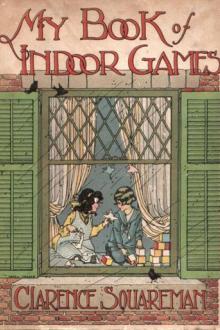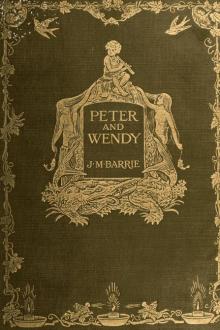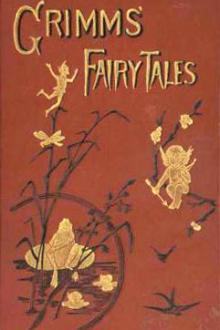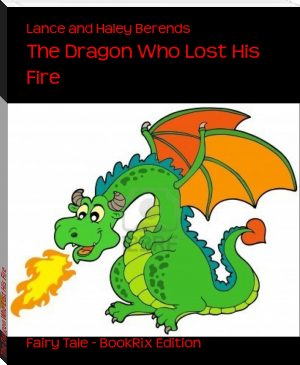Children of the Knight, Michael J. Bowler [classic book list txt] 📗

- Author: Michael J. Bowler
- Performer: -
Book online «Children of the Knight, Michael J. Bowler [classic book list txt] 📗». Author Michael J. Bowler

Table Of Contents
Chapter 1: All Is As It Should Be
Chapter 2: Children Of God
Chapter 3: That Is Who You Are
Chapter 4: Might For Right
Chapter 5: We’re Brothers Now, Aren’t We?
Chapter 6: How Else Can They Learn?
Chapter 7: Speak The Oath Squire
Chapter 8: The Fruits Of Thy Handiwork
Chapter 9: Now Suddenly I Am Somebody
Chapter 10: Is That What We’ve Become?
Chapter 11: How Can I Face Him?
Chapter 12: That Boy Is Special
Chapter 13: It Be Your Choice
Chapter 14: Be It Over?
An Excerpt From Running Through A Dark Place
The Lance Chronicles
Praise for
Children of the Knight
(Book 1 of The Lance Chronicles):
“In Children of the Knight, Michael Bowler has created a work that is neither light-hearted nor consistently easy to read. But it is important and interesting, and maybe even mandatory. It is also very human and real, while still being somehow fanciful—and engaging to all ages. Highly recommended.”
—Mia Kerick, Young Adult Author
“At its heart, Children of the Knight was a social commentary wrapped in a fictional fantasy. At its core, this novel was also a warning. A clear message that we cannot continue to write off the poor and disenfranchised, the street gangs, the youth who prostitute themselves, for they are the future of this world. There were times when this novel simply broke my heart.”
—Sammy on Goodreads
“Author Michael Bowler did an excellent job of twisting a real historical character in to a modern day twist. He brought to light an age old problem of child neglect in many forms and also the way we humans treat each other.”
—Naila Moon
“I will make this short and straightforward. Children of the Knight is one of the most spell-binding, heart-stopping, inspiring books I have ever had the great pleasure to read. From beginning to end, the plot is complex, the characters three dimensional, the writing powerful and elegant. Indeed, Michael J Bowler is a powerful writer with a gift unparalleled. I can’t praise it enough.”
—Huston Piner, author
“What some children go through, no one should have to. It was interesting to see the fantasy mixed up with the real. I liked that the legend was used as a positive. I felt great sadness as I read. I did cry, but I liked the hope that was given and I felt attached to all of the characters. I want to read more now.”
—Blaze on Goodreads
“Each individuals story will wrench your heart and have you cheering. I literally was brought to tears twice and not just a single tear, but all out gushing and sniffling. The ending is heart rending and triumphant all at once. I won’t tell you more than that because I would ruin the story for you.”
—V.A. Dold
“The story’s greatest strength is in its depiction of exploited youth, brave children finding their place in a system that’s rejected them, in a world that too freely abuses and condemns, needing approval, and learning to stand up for what they finally believe in.”
—Sheila on Goodreads

Published by Michael J. Bowler, USA stuntshark2.0@gmail.com
This is a work of fiction. Names, characters, places, and incidents are either the product of the author’s imagination or are used fictitiously, and any resemblance to actual persons, living or dead, business establishments, events, or locales is entirely coincidental.
Children of the Knight
(The Lance Chronicles 1)
Second Edition Copyright © 2018 by Michael J. Bowler
Cover Art and Interior Formatting by
All rights reserved. No part of this book may be reproduced or transmitted in any form or by any means, electronic or mechanical, including photocopying, recording, or by any information storage and retrieval system without the written permission of the Publisher, except where permitted by law. To request permission and for all other inquiries, contact Michael J. Bowler at stuntshark2.0@gmail.com.
Print: ISBN: 978-0-9908711-6-3
Mobi: ISBN: 978-0-9908711-7-0
epub: ISBN: 978-0-9908711-8-7
Second Edition
July 2018
This book is respectfully dedicated to all the kids I’ve worked with over the years who have inspired me, most especially those incarcerated youth who shared with me their deepest, darkest secrets. They opened up to me about the horrors of their upbringing and the degradations life had perpetrated upon them, and yet never ceased to amaze me with their resilience, their undying hope for a better life, and their unlimited capacity to love. Specifically, to those of you who inspired the characters of Lance, and Jack, and Reyna, and Esteban, and most especially Mark—you remain in my heart and soul forever.
Chapter 1:
All Is As It Should Be
Once upon a time in the City of Angels, chaos was king, and carelessness ruled. Street gangs roamed the city. Most politicians bettered their own lives, not those of the people they were elected to serve. Neighborhoods declined to slum-like conditions. The Los Angeles school system stumbled headlong toward total Armageddon. And the most victimized segment of the populace?
The children. The teens. The next generation.
Limited choices and often abusive or neglectful home lives forced hundreds, if not thousands of children, into the streets to join gangs, turn tricks, do drugs, sell drugs, drop out of school, get arrested and sent to prison for life, and in all ways subjugate their goodness in the name of survival.
All hope seemed lost. Until the mysterious “tag” appeared throughout the city, spray-painted on walls and over graffiti, obliterating gang markings without mercy, without favoritism, with impunity.
A “tag” that became the symbol of a revolution.

The gangs of Boyle Heights often clashed over turf or drugs.
Tonight it was about disrespect.
LAPD officers fought to contain the brawling, screaming gang members, firing rubber bullets, banging heads with nightsticks, slapping cuffs on tattooed wrists. These rival Latino factions clashed often, especially on this street, a dividing line between their two ’hoods.
Scrawled on the wall behind the brawling youths and struggling cops were various gang monikers and names, indicating the back and forth struggle for control of the area. Above all these, written in beautifully articulated lettering and accompanied by the drawing of a dove flying over a rainbow—and partially scribbled over by graffiti—was painted: “Pray for Peace in the Barrio.”
Anarchy reigned as cops in riot gear struggled to apprehend the fighting youths, while other gang members ran helter-skelter between numerous police and local news media vehicles attempting to escape the police cordon. The news cameras rolled, taking in every violent moment while the flashing red lights of police and paramedic vehicles cast a dramatic strobe-light effect over the scene.
As the situation slowly settled into containment, with most gang members either restrained or dashing off into the darkness, the last two boys were roughly pulled apart by four cops. These two boys fought so furiously that two officers were required for each boy to keep them from killing one another.
Nearly seventeen, Esteban was a strong, buffed-up teen with unkempt facial hair and a nearly bald head. He wore a torn tank top undershirt that revealed several tattoos on his naked, muscular arms.
Jaime was sixteen, clothed in a muscle shirt that revealed his own assorted tattoos, which included his name on his neck and Our Lady of Guadalupe on his right forearm.
As cops shoved these boys toward different police cruisers, their faces slashed by the flashing red lights, Jaime kicked and screamed, shrieking furiously at Esteban, his face red with rage, “You’re dead, Ese! Dead!”
Esteban, calm and composed now that the fighting was over, gazed solemnly back at his raging rival.
“You ain’t gonna touch me, fool,” he announced quietly before being forced into the backseat of a police car. The doors slammed behind him.
The other officers shoved Jaime violently into the back of another cruiser before the youth could shout a response. Suddenly, the bedlam ended, and the clean-up began.
Sergeant James Ryan wore his fifty-five years more like a weary sixty-five or seventy, his hair having turned almost completely gray, his craggy face worn and weathered by stress.
Forty-year-old Robert Gibson was African American, tall and imposing, with broad shoulders and a well-groomed mustache.
Ryan surveyed the mop-up operation and shook his head in disgust. “Hell, Gib, our tagger’s been here too!”
“We’ve got to nail this guy, Ry, before he ignites the whole city.”
They gazed at the brick wall before them. Painted in bright purple paint or ink, was a simple, but unusual symbol. This symbol, having been painted over the gang logos and gang names, and appearing on walls and buildings throughout the city in recent days, had precipitated numerous outbreaks of gang-on-gang violence. Both sides in these clashes believed the other had disrespected them by placing this “tag” over their own.
The symbol—a large A with a sword thrust down through it—now adorned the wall, clearly asserting its dominion over what had previously been claimed.
Helen Schaeffer, a blonde and ambitious thirtysomething newswoman for a local TV station hurried over to Ryan and Gibson with her cameraman in tow. The bright light of the camera fell on the furious faces of the two officers, momentarily blinding them.
“Sergeant Ryan, any comment on this latest incident?” Helen asked with authority, her mic shoved professionally up under Ryan’s chin.
Ryan shoved it away. “Yeah, it stinks!” He turned and strode back toward his car. Gibson shrugged as Helen swung her microphone toward him, and quickly followed his partner.
Helen turned back to the camera, flashing her perfect television teeth. “As you just saw, the police still aren’t saying much about this latest outbreak of gang violence.”

Within the Hollenbeck Station Gang Task Force Division, activity was at a premium due to this latest gang brawl. Paperwork was rushed through as gang members, some as young as twelve, were booked and carted off to juvenile hall while phones rang off the hook. No surprise to Ryan was the obvious lack of parents checking on the health and welfare of their kids.
Chewing absently on a pencil, he and Gibson sat watching a flat screen TV mounted on the wall above them. Other cops bustled past, a few stopping to glance at the broadcast before moving on.
On the screen, Helen’s vivacious ambition shone through. She spoke directly to the camera, the last of the police mop-up going on behind her. “This is the seventh large-scale gang fight in the past two weeks, and the police refuse to comment. The only connection seems to be this strange symbol.”
The camera cut to a close-up of the A symbol while she continued in that dispassionate newscaster tone, “Or ‘tag’, as the graffiti artists call it. Is this—”
Gibson angrily clicked off the TV with a remote. Sitting in a straight- backed chair beside them, shackled at the wrists and ankles, Esteban chuckled.
“I think it’s you guys, Ryan,” the relaxed boy stated calmly.
Gibson leaned forward, right into Esteban’s face. “You think it’s us, huh, Gallegos?”
Esteban smirked. For a cop, Esteban knew, this guy wasn’t too bad, but Ryan was a real loser, like one of those old, burned out cops in movies who always get outsmarted by guys like him.
Ryan put down his pencil and leaned forward. “Look, the only reason you’re up here, Esteban, is because you’re probably the only one of these punks who has a brain.”
Esteban nodded. He and Ryan knew each other too well. “It all fits, man. You





Comments (0)